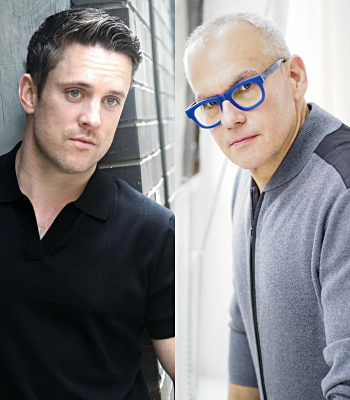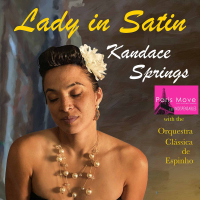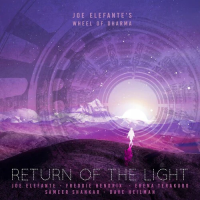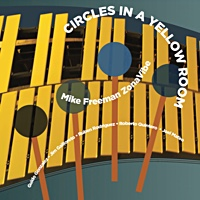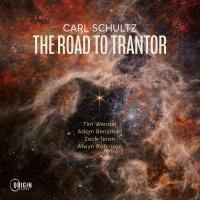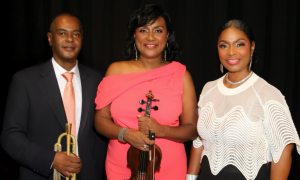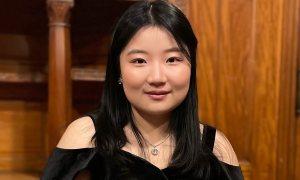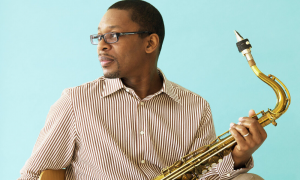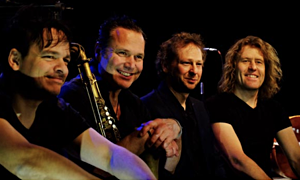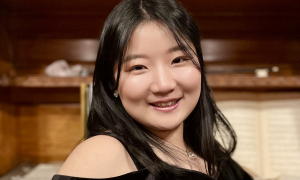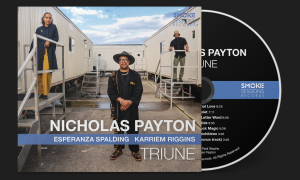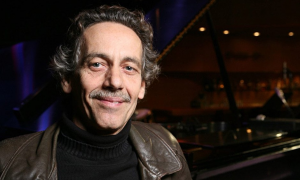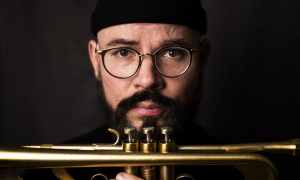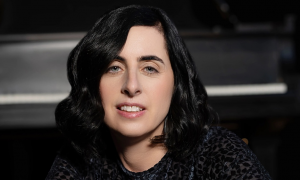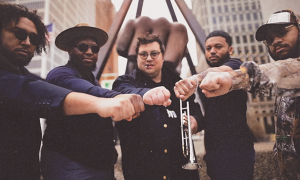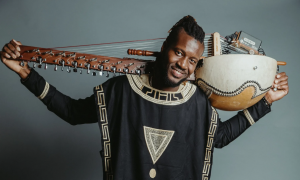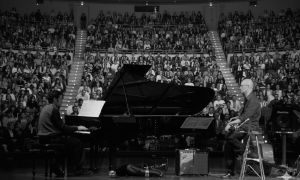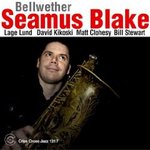 Seamus Blake, Bellwether (Criss Cross). Since 1993, when Seamus Blake was 22, Gerry Teekens of Criss Cross Records has been traveling from Holland to New York to record the gifted Canadian tenor saxophonist. Teekens was one of the first recording executives to document Blake's work, and he has been doing it ever since. Bellwether is Blake's sixth Criss Cross album as a leader. He has been a sideman on 16 others. That is hardly overexposure for a musician of his inventiveness. Blake's technique makes him one of the fastest tenors since Johnny Griffin. His speed can be dazzling, but he employs it in the service of the stories he tells in his solos, not merely for display. Often, he spins out his inventions in long, lyrical lines, as in “A Beleza Que Vem" and “The Song That Lives Inside," two of his five compositions on the CD. The remaining tracks are John Scofield's “Dance Me Home" and the third movement of Claude Debussy's String Quartet in G Minor. Blake included the second movement of the quartet on his previous recording. The liner notes quote him as saying that he treats the Debussy movement as if it is a tune, “and we create a solo section out of some of the chords and loop that area. I guess you could say we sort of 'jazzify' it." Yes, you could say that. Blake's quintet includes his longtime collaborator pianist David Kikoski, guitarist Lage Lund, bassist Matt Clohesy and drummer Bill Stewart. Blake often works in Stewart's band. Whether it is the result of intensive rehearsal or of sympathetic listening among close colleagues, this band has a sense of contrast that is welcome in an age when many jazz groups operate on one dynamic level.
Seamus Blake, Bellwether (Criss Cross). Since 1993, when Seamus Blake was 22, Gerry Teekens of Criss Cross Records has been traveling from Holland to New York to record the gifted Canadian tenor saxophonist. Teekens was one of the first recording executives to document Blake's work, and he has been doing it ever since. Bellwether is Blake's sixth Criss Cross album as a leader. He has been a sideman on 16 others. That is hardly overexposure for a musician of his inventiveness. Blake's technique makes him one of the fastest tenors since Johnny Griffin. His speed can be dazzling, but he employs it in the service of the stories he tells in his solos, not merely for display. Often, he spins out his inventions in long, lyrical lines, as in “A Beleza Que Vem" and “The Song That Lives Inside," two of his five compositions on the CD. The remaining tracks are John Scofield's “Dance Me Home" and the third movement of Claude Debussy's String Quartet in G Minor. Blake included the second movement of the quartet on his previous recording. The liner notes quote him as saying that he treats the Debussy movement as if it is a tune, “and we create a solo section out of some of the chords and loop that area. I guess you could say we sort of 'jazzify' it." Yes, you could say that. Blake's quintet includes his longtime collaborator pianist David Kikoski, guitarist Lage Lund, bassist Matt Clohesy and drummer Bill Stewart. Blake often works in Stewart's band. Whether it is the result of intensive rehearsal or of sympathetic listening among close colleagues, this band has a sense of contrast that is welcome in an age when many jazz groups operate on one dynamic level.
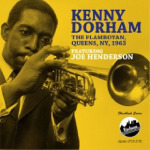 Kenny Dorham, The Flamboyan, Queens, NY, 1963 (Uptown). This broadcast recording is a treasure unearthed after 47 years. Alan Grant, who hosted the broadcast from an obscure club in an outer borough of New York City, preserved the tape of the program. It documents the early stage of the partnership between Dorham, one of the great trumpet soloists of the bebop and post-bop eras, and the young tenor saxophonist Joe Henderson. Among the herd of Coltrane clones, Henderson was beginning in the early 60s to attract attention as an individual voice. He went on to be recognized as a modern master of the instrument. The pair made two Blue Note albums together under Dorham's leadership, three under Henderson's and one under Andrew Hill's. This unexpected and welcome preview of their symbiosis deserves a place alongside the Blue Notes.
Kenny Dorham, The Flamboyan, Queens, NY, 1963 (Uptown). This broadcast recording is a treasure unearthed after 47 years. Alan Grant, who hosted the broadcast from an obscure club in an outer borough of New York City, preserved the tape of the program. It documents the early stage of the partnership between Dorham, one of the great trumpet soloists of the bebop and post-bop eras, and the young tenor saxophonist Joe Henderson. Among the herd of Coltrane clones, Henderson was beginning in the early 60s to attract attention as an individual voice. He went on to be recognized as a modern master of the instrument. The pair made two Blue Note albums together under Dorham's leadership, three under Henderson's and one under Andrew Hill's. This unexpected and welcome preview of their symbiosis deserves a place alongside the Blue Notes.
Dorham's solo on “Dorian" includes a quote from “I Get The Neck of the Chicken," an unlikely insertion into a modal piece and typical of his subtle wit. The lyricism of his work on “I Can't Get Started," “Summertime" and an early version of his composition “Una Mas" is based in the warmth of his sound and the depth of his unique exploitation of chords. It is a reminder of why nearly half a century later Dorham is an influence on the harmonic thinking of young players. Henderson, fully formed by 1963, solos with daring, passion and tonal qualities that make him immediately recognizable. The rhythm section of pianist Ronnie Matthews, bassist Steve Davis and drummer J.C. Moses is solid and effective despite Matthews having to accommodate to a horrid piano. The CD presents the club performance intact as a broadcast. Grant's announcements are on tracks that can be programmed out by those who don't want to hear them on repeated listenings, but they are reminders that there was a time when little clubs presented major players and radio stations did live remotes.
 Sam Sadigursky, words project iii miniatures (New Amsterdam). As we pointed out in a Rifftides posting two years ago today, jazz and poetry never really became a movement. Over the past 90 years or so, the hybrid form has had a few peak periods and some embarrassing lows. On the strength of Sam Sadigursky's work, we may be at one of the peaks. This is Sadigursky's third CD of poetry set to music or, to be more accurate, poetry integrated with music. His voice, guitar and reeds are in play, along with the voice, trumpet and keyboards of Michael Leonhart. They also use a collection of miscellaneous instruments including Sadigursky's glockenspiel and Leonhart's pump organ and waterphone.
Sam Sadigursky, words project iii miniatures (New Amsterdam). As we pointed out in a Rifftides posting two years ago today, jazz and poetry never really became a movement. Over the past 90 years or so, the hybrid form has had a few peak periods and some embarrassing lows. On the strength of Sam Sadigursky's work, we may be at one of the peaks. This is Sadigursky's third CD of poetry set to music or, to be more accurate, poetry integrated with music. His voice, guitar and reeds are in play, along with the voice, trumpet and keyboards of Michael Leonhart. They also use a collection of miscellaneous instruments including Sadigursky's glockenspiel and Leonhart's pump organ and waterphone.
Sadigursky employs several womens' voices to read poetry by Carl Sandburg, William Carlos Williams, Emily Dickinson, Maxim Gorky, Kenneth Patchen, contemporary poets David Ignatow, Maureen N. McLane, Sadi Ranson-Polizzetti and others. The poems are rightly described as miniatures because of their length, not their ideas. This is a far cry from a band wailing a blues as a poet reads. There seems to be little improvisation except in the readers' timing, phrasing and inflections. Yet, the work generally has the feeling of jazz spontaneity. Ignatow's brief “Content" becomes a wordscape of intersecting lines. Gorky's “O Muzyke Tostykh" is his late 1920s screed against the middle class infatuation with jazz, which he called the music of degenerates. Sadigursky sets it to a background voiced in minor for bass clarinets, flute, trumpet, glockenspiel and percussion. Through repetition, the four lines of Williams's “El Hombre" become a mantra riding on the insistence of light Latin rhythm. And so it goes, each poem treated differently, each rewarding the listener's attention and effort.
BRIEFLY
John Stowell, Anson Wright, The Sky At Our Feet. Anson Wright, Tim Gilson, Ukiah's Lullaby (Open Path). All of the poetry on The Sky At Our Feet is by Wright. It evokes the beauty and mystery of Chaco Canyon, New Mexico, in the American desert Southwest. John Stowell reads the poems and accompanies himself on guitar, in some cases overdubbing instruments so that the starkly etched imagery of Wright's words stands out against the ripples and shimmers of Stowell's music and what Wright's web site calls “light electronic scores." Those augmentations don't detract from Stowell's rich backgrounds. A sensitive and resourceful guitarist turns out to be a fine speaker of poetry.
Wright is a guitarist as well as a poet. In that role, he devotes Ukiah's Lullaby to duets with bassist Gilson. Six of the tunes are his, four Gilson's. Wright's “Orion" has the flavor of the kind of modal structures Miles Davis pioneered with “Milestones" and “So What." They enhance harmonic interest through the spareness of Wright's strategic chords and melody lines and Gilson's tuning of his bass in fifths a la the late Red Mitchell. Gilson's ballad “Sometimes There Are No Words" is beautifully bowed by the bassist.
Mike Longo Trio, Sting Like A Bee (CAP). The remarkable, and remarkably unheralded, pianist's new CD is a sequel to his --what else?-- Float Like A Butterfly of 2007. The Oscar Peterson protg and Dizzy Gillespie rhythm section stalwart stings as effectively as he floats, opening with Wayne Shorter's “Speak No Evil" and closing unaccompanied with a righteously two-fisted take on Gillespie's “Kush." Along the way, Longo, bassist Bob Cranshaw and drummer Lewis Nash explore pieces by Clifford Brown, Herbie Hancock, Wayne Shorter, Kurt Weill, Leonard Bernstein and Cole Porter. They combine delicacy and strength in a compelling treatment of Clare Fisher's “Morning" and radiate Charlie Parker's bop spirit in Longo's “Bird Seed," which could profitably have gone on much longer. Riches are unlikely for jazz musicians, but Longo surely deserves a bigger portion of fame.


